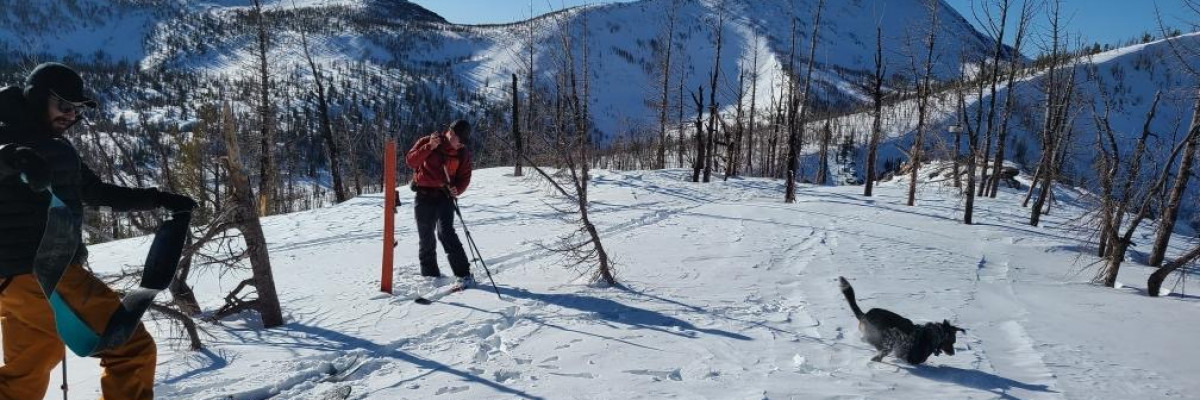The avalanche danger in the west central Montana backcountry is LOW
Good morning, this is Jeff Carty with the West Central Montana Avalanche Center’s avalanche advisory for December 3, 2020. This advisory does not apply to operating ski areas, expires at midnight tonight, and is the sole responsibility of the U.S. Forest Service.
There has been no new snow since Monday.
Temps have ranged from 17º to 42º. Winds were westerly 8mph with gusts to 20mph.
Remember that low danger does not mean no danger. Windslab may still be an isolated issue on high elevation wind-loaded slopes greater than 35º. The snowpack is mostly stable. However, variations do exist within the region, approach all slopes with suspicion. Isolated slopes in the Swans have a buried, but apparently well-bonded layer of surface hoar, down 10″. Other pockets of shallowly buried surface hoar likely exist throughout the forecast area. Solar warming was strong on southern aspects and rollerballs were forming above 8000′ yesterday. With strong inversion temperatures and sun, watch for wet loose avalanches late in the day. Move to shaded aspects as the snow heats up.
Below 7000′ feet, the snowpack is minimal, early season hazards abound. The snowpack will be shrinking this week, expect more hazards to appear. Above 7000′, snow depths grow. At upper elevations, they are at or above average and mostly stable conditions exist. However, this base is starting to change with the high pressure we’ve had and will continue to change with the fair weather forecast until Monday or Tuesday.
We are starting to see near-surface faceting in the upper 10″ and faceting grains below the rain crust, about 15″ from the ground. The lower layer is still showing high strength in stability tests but we are beginning to see planer fractures. This is something to keep an eye on. With an extended period of high pressure, we could see further faceting of the snowpack, although the warm temperatures in the forecast should slow it down. Areas with a shallower snowpack will be more susceptible to faceting.
In addition to facets within the snowpack, there is surface hoar to be aware of. Cold, clear nights with mild winds, as we are currently experiencing, are perfect for surface hoar growth. Expect widespread surface hoar throughout the region, concentrated on northerly aspects. This will be a stability concern when the next storm lands on this very weak layer.
The bottom line:
Above 7000′, we have a mostly stable snowpack. Wind slabs may still be present on steep leeward terrain, avoid wind-loaded start zones greater than 35º. Isolated pockets of buried surface hoar exist. Warm temps and sun are affecting southern aspects, wet loose avalanches could be an issue. Continue to practice safe travel protocols in case you find an exception to a generally stable snowpack. Travel one at a time in avalanche terrain, carry a beacon, shovel, and probe, and stay alert for signs of instability. Dig a pit. Look for red flags.
Below 7000′, the snow mostly lacks the depth for decent skiing or avalanches.
High pressure has weakened the snowpack with faceting and created surface hoar. It will continue to do this through the rest of the week. These layers will be important to take note of as they will affect stability with subsequent snowfall. Please help us track these layers by submitting an observation if you get out in the backcountry.
Ski and ride safe
























